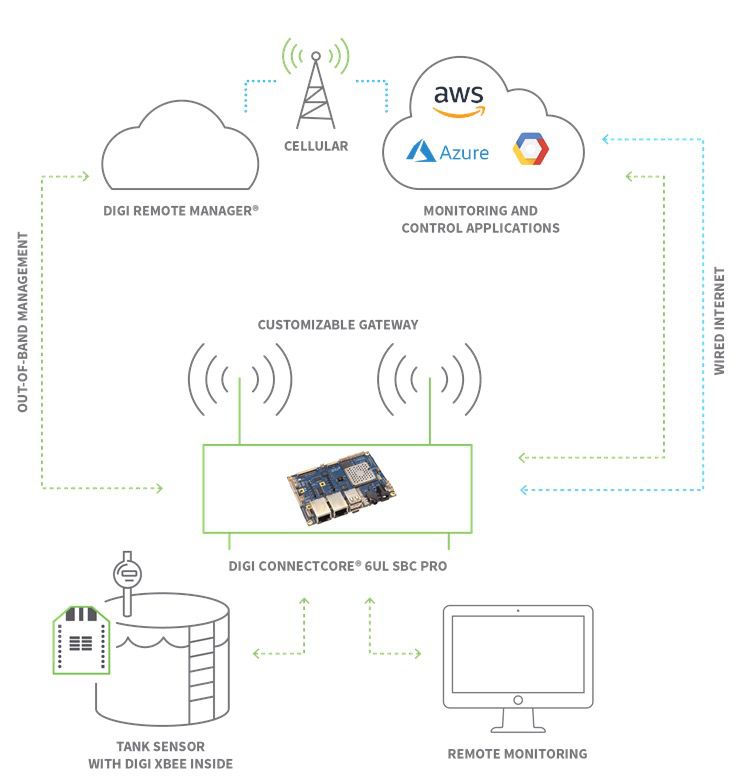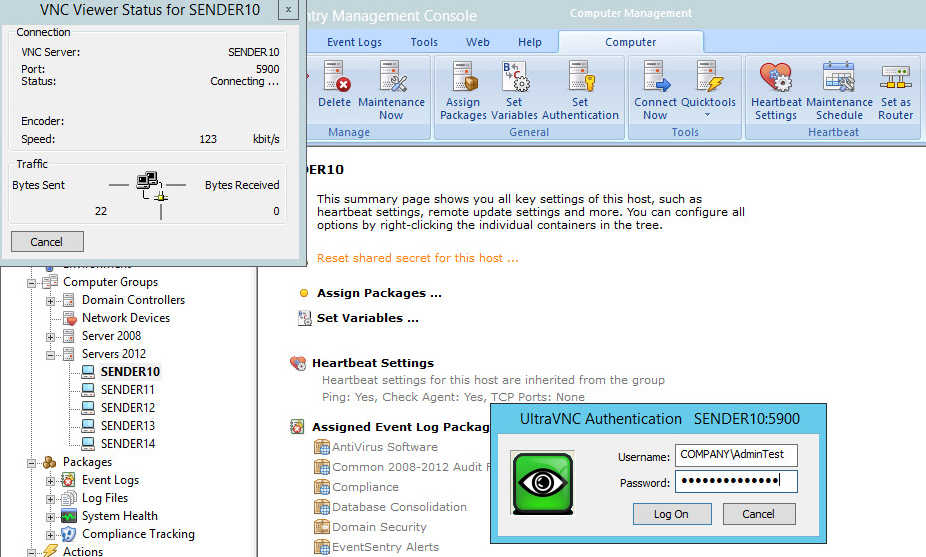VNC For IoT: Remote Access Guide (Free & Easy)
Can you truly control the digital world from the palm of your hand, regardless of physical distance? The answer, surprisingly, is a resounding yes, thanks to the power of Virtual Network Computing (VNC) and its integration with the Internet of Things (IoT).
The landscape of technology is constantly evolving, and at its core lies the relentless pursuit of connectivity and control. The marriage of IoT devices the smart sensors, the automated systems, the embedded computers that power our increasingly intelligent world with VNC technology represents a significant leap forward in this evolution. Consider scenarios where remote interaction is not just convenient but essential: troubleshooting a malfunctioning sensor in a remote agricultural field, monitoring a smart home system from across the globe, or managing industrial IoT equipment in a sprawling manufacturing plant. The ability to access and interact with these devices, as if you were physically present, is transformative.
Virtual Network Computing (VNC) itself is a widely adopted technology, a beacon of accessibility in the digital realm. It empowers users to remotely control devices equipped with graphical interfaces, acting as a virtual portal to their operation. Devices like the Raspberry Pi, the Nvidia Jetson Nano, and even Google Coral, which are foundational to countless IoT projects, benefit immensely from this remote accessibility. Through VNC, developers can seamlessly access the GUI of these devices, facilitating development, monitoring, and troubleshooting operations.
- No Results Try Again Tips Tricks For Search Queries
- Aditi Mistry Trending Videos News More Latest Updates
The appeal of VNC lies in its simplicity and versatility. It allows for the full desktop experience to be mirrored remotely, enabling users to run applications, edit files, and interact with the IoT device as if they were physically there. Whether one is a seasoned professional or a budding enthusiast, the benefits are immediately apparent. The capacity for remote access elevates the potential of IoT projects, unlocking endless possibilities. In essence, VNC has become the indispensable tool for seamlessly managing smart devices from anywhere in the world.
VNC and IoT
The heart of VNC's utility for IoT lies in its ability to extend a graphical interface, enabling remote control of devices that may be physically inaccessible or spread across vast distances. It operates on a client-server model. The VNC server, running on the IoT device, captures the screen output and transmits it over the network. The VNC client, on a Windows, macOS, or even another IoT device, receives this data and displays it. User inputs (mouse clicks, keyboard strokes) are sent back to the server, which interprets them and updates the display accordingly. This simple exchange forms the basis of complete remote control.
One of the most popular, and easy to configure, choices in the VNC landscape is TightVNC. It is a free and open-source software package, lauded for its ease of use and suitability for remote control applications. While alternatives like TigerVNC, UltraVNC, and RealVNC exist, TightVNC stands out for its accessibility, particularly when setting up remote connections. This makes it an excellent starting point for individuals new to the intricacies of remote access technologies.
- Alternatives To Vegamovies Discover Stream Movies Online
- Bolly4u Alternatives Insights Find Movies You Love Today
To establish a VNC connection over the internet, a few key steps must be undertaken. This process typically includes setting up the VNC server on the IoT device, configuring the network to allow external connections, and installing and configuring a VNC client on the user's machine. This process can seem daunting at first, but with proper guidance and understanding, it is manageable and very much worth the effort.
Consider a scenario involving a Raspberry Pi, a device often utilized in IoT projects, and the need for remote access. First, the Raspberry Pi is set up with an XFCE desktop environment, offering a lightweight and efficient graphical user interface. Then, a VNC server such as TightVNC is installed and configured on the Raspberry Pi. Simultaneously, the network must be adjusted, likely by opening ports on a router, to allow for incoming connections from the internet. Finally, on a Windows or macOS laptop, a TightVNC client is installed and configured to connect to the Raspberry Pi's public IP address, allowing seamless remote access.
In the context of IoT, the benefits of VNC are numerous. It streamlines troubleshooting, offering remote diagnostics of devices. It facilitates monitoring, enabling real-time surveillance of systems and environments. It simplifies management, allowing remote updates and configurations. The applications stretch across numerous domains, from home automation to industrial control.
However, the advantages are accompanied by certain considerations. Security is of paramount importance; it's necessary to take steps to protect the VNC connection from unauthorized access. Keeping the VNC server and the operating system of the IoT device up-to-date is an essential practice, patching any security vulnerabilities that may exist. Furthermore, being mindful of network bandwidth limitations is crucial to ensuring a smooth and responsive remote experience, as the connection's performance will heavily depend on the network conditions.
The advantages, however, do not come without potential challenges. One key aspect to address is the security of the VNC connection. It's essential to implement measures that protect your remote access from unauthorized users. It's recommended to secure your connection with strong passwords, consider encryption, and potentially utilize a secure tunnel, such as SSH, to add an additional layer of protection. Further, keeping the operating system of your IoT device and the VNC server updated is extremely important in patching security vulnerabilities.
Additionally, the remote experience is reliant on available network bandwidth and performance. Ensure that you have a stable and reliable internet connection to facilitate smooth interaction. Consider that high-resolution displays and complex graphical applications can consume significant bandwidth. Network conditions will dictate responsiveness, and a low-bandwidth connection can create delays.
Remote access solutions that employ VNC become even more useful when combined with other advanced technologies, such as SSH tunneling through services like Pinggy. These tools permit access to your IoT devices from virtually anywhere. This level of control is no longer a luxury; it's quickly becoming a necessity in a world that is becoming ever more interconnected.
For those seeking to implement remote access solutions using VNC, an array of tools are available. One example is the SocketXP IoT platform, offering seamless remote access to an IoT device's GUI desktop using VNC. This can simplify the process of setting up and maintaining remote connections. Another way to configure access is through services like AWS IoT, allowing you to create a secure tunnel for remote access. These tools and platforms represent a commitment to expanding the possibilities offered by remote IoT management.
Remote access to your Raspberry Pi, or any IoT device, opens up endless possibilities for IoT projects. The ability to run applications, edit files, and interact with your IoT device remotely, as if you were physically present, is a powerful advantage. This guide has provided a thorough view into the world of VNC and IoT, offering the tools and techniques to transform how you engage with smart devices.
In today's interconnected world, managing and controlling devices remotely is no longer a convenience; it's a necessity. VNC technology is at the forefront of this capability, providing a flexible and powerful solution for remotely accessing and managing IoT devices. The benefits are clear, ranging from streamlined troubleshooting to efficient monitoring and management. The path to establishing remote access may seem complex, but with the right tools and a clear understanding of the process, it is an achievable goal, opening doors to the expansive potential of IoT projects and digital control. Whether you're a beginner or an experienced developer, the integration of VNC and IoT will inevitably revolutionize the way you interact with connected devices.
| Aspect | Details |
|---|---|
| Technology | Virtual Network Computing (VNC) |
| Core Function | Enables remote control of devices via a graphical interface. |
| Typical Application | Remote access to Internet of Things (IoT) devices. |
| Common Use Cases | Troubleshooting, monitoring, and managing IoT devices; accessing GUI desktops of devices like Raspberry Pi, Nvidia Jetson Nano, and Google Coral. |
| Key Components |
|
| Popular Software | TightVNC, TigerVNC, UltraVNC, RealVNC |
| Benefits |
|
| Important Considerations |
|
| Tools and Platforms | SocketXP IoT platform, AWS IoT |
| Overall Impact | Revolutionizes how we interact with connected devices, expanding the potential of IoT projects. |
Reference : Example Website



Detail Author:
- Name : Deborah Heller
- Username : cjenkins
- Email : maddison35@larkin.info
- Birthdate : 1971-02-20
- Address : 95767 Felicia Garden Apt. 388 Brookfort, VT 58492-5285
- Phone : +19844728898
- Company : Leffler, Waters and Lakin
- Job : Archivist
- Bio : Dolor maxime commodi in reiciendis consequuntur. Recusandae illum ut consequatur sint inventore. Nisi dolor possimus id libero id doloribus iure non.
Socials
instagram:
- url : https://instagram.com/helene.bartoletti
- username : helene.bartoletti
- bio : Aut quis id fuga nemo voluptatem. Facilis ex sit velit.
- followers : 2390
- following : 2971
twitter:
- url : https://twitter.com/hbartoletti
- username : hbartoletti
- bio : Molestiae ipsam sed soluta officiis. Voluptatem similique voluptate atque optio facere voluptas voluptates. Quia maxime itaque modi.
- followers : 1608
- following : 2335
tiktok:
- url : https://tiktok.com/@bartoletti1999
- username : bartoletti1999
- bio : Aut cum laboriosam quos maxime qui qui.
- followers : 1150
- following : 2538